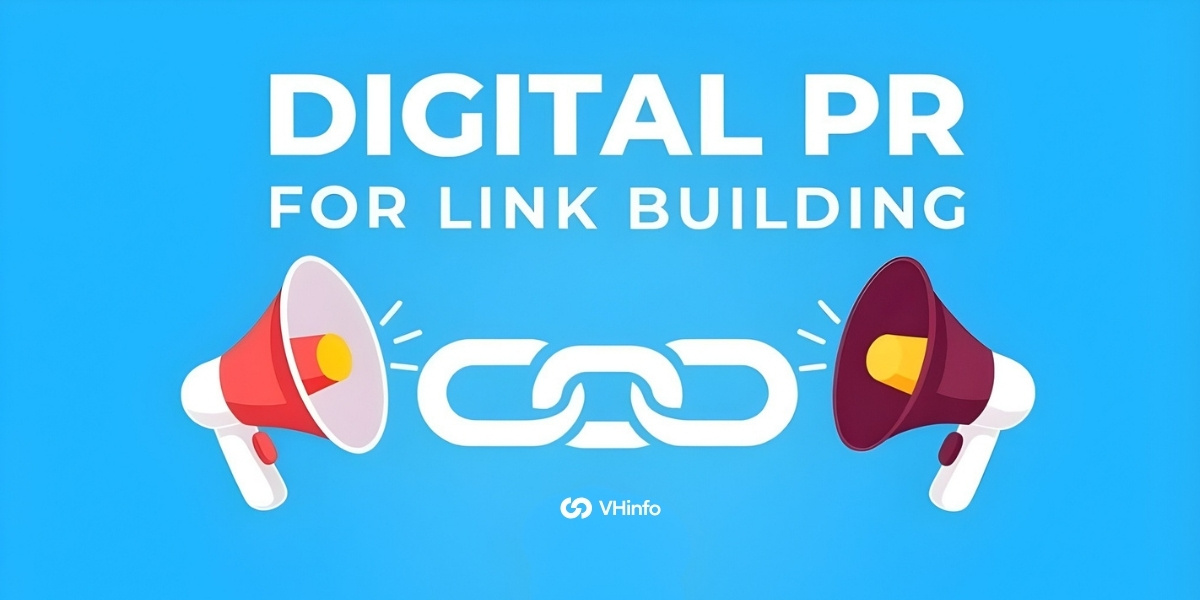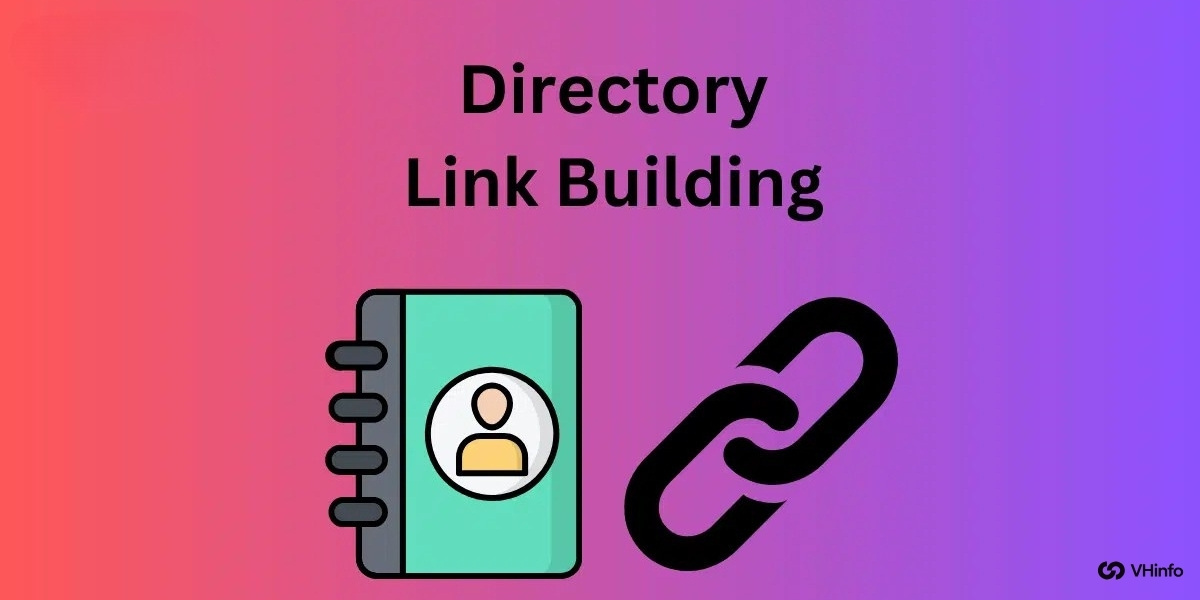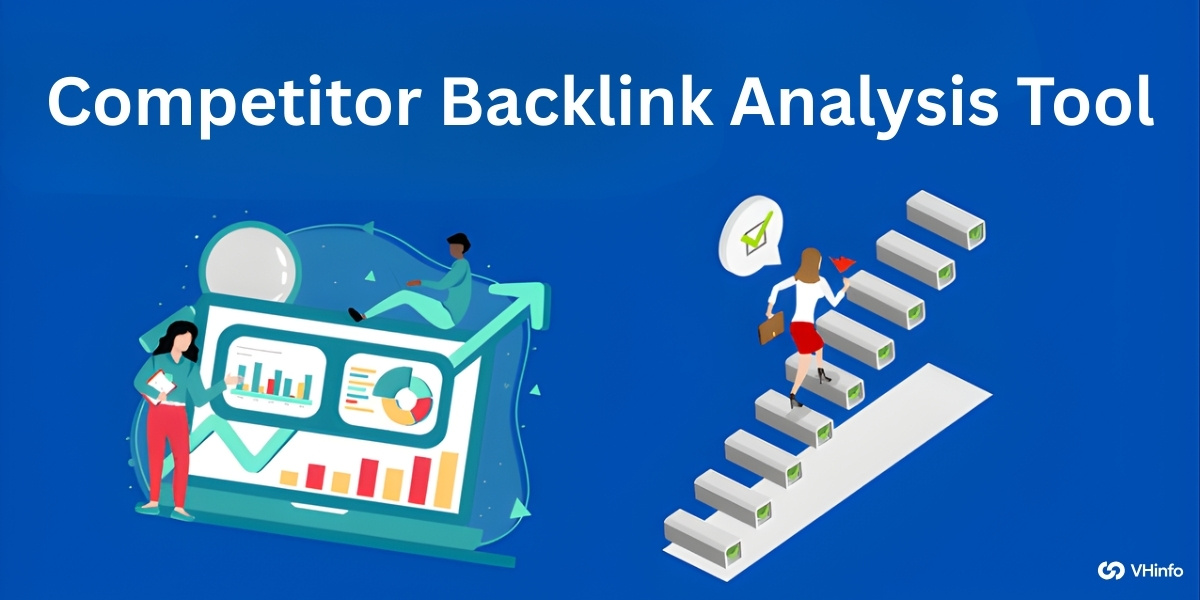As a SaaS business, having a solid marketing plan is essential for driving sustainable growth and standing out in a competitive market. At VH Info, we understand the unique challenges and opportunities that come with marketing a SaaS product.
In this comprehensive guide, we’ll walk you through the key components of creating an effective SaaS marketing plan, sharing insights and best practices to help you achieve your goals.
What is a SaaS Marketing Plan?

A SaaS marketing plan is a strategic document that outlines the specific marketing strategies, tactics, and resources a SaaS company will use to attract, acquire, and retain SaaS customers. It serves as a roadmap for your marketing efforts, ensuring that all activities are aligned with your business objectives and target audience.
Why is a Marketing Plan Important For SaaS Businesses?
Having a well-defined SaaS market plan is important for several reasons:
- It helps you focus your marketing efforts on the most effective channels and tactics
- It ensures that your marketing activities are aligned with your overall business goals
- It allows you to allocate your marketing budget efficiently
- It provides a framework for measuring and optimizing your marketing performance
How SaaS Marketing Differs From Traditional Marketing?
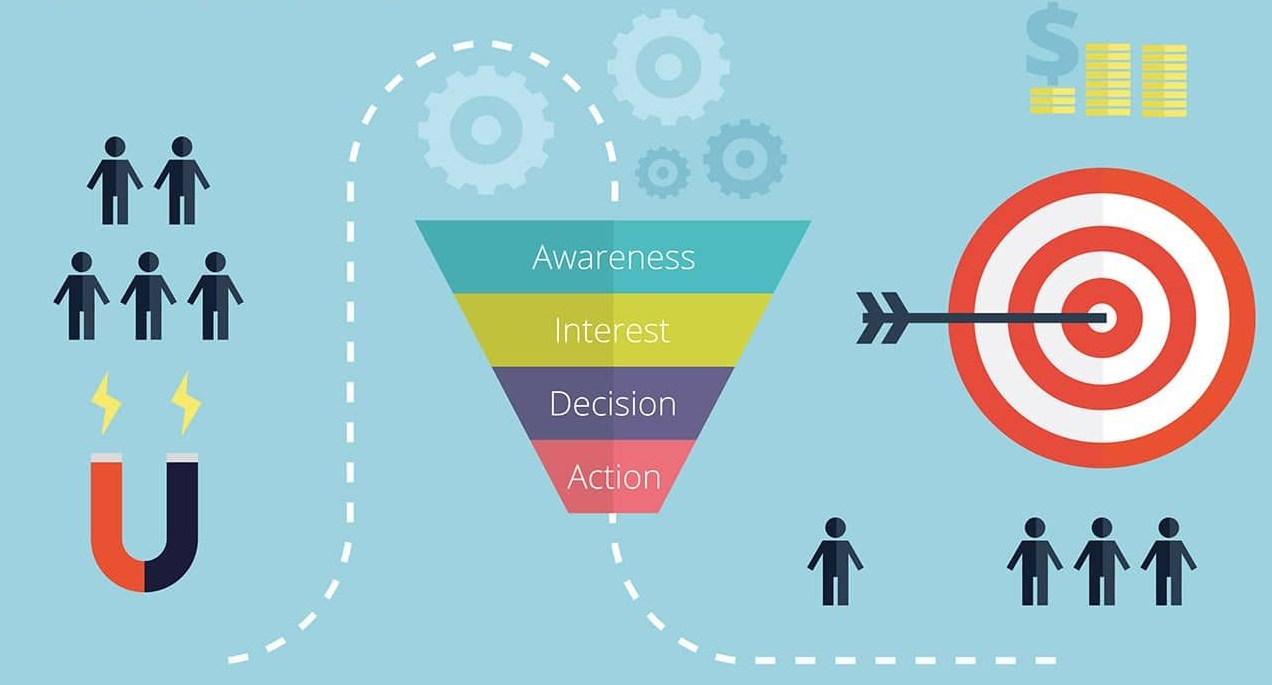
SaaS marketing differs from traditional marketing in several key ways:
- Focus on customer retention: SaaS businesses rely on recurring revenue, so customer retention is just as important as brand awareness and acquisition.
- Emphasis on user experience: The success of a SaaS product depends heavily on providing a seamless and valuable user experience.
- Longer sales cycle: SaaS products often require more education and nurturing to convert leads into target customers.
- Data-driven optimization: SaaS companies have access to rich customer data, allowing for continuous optimization of marketing efforts through out the customer journey.
SaaS Marketing Plan Vs. SaaS Marketing Strategy
While often used interchangeably, a SaaS marketing plan and a SaaS marketing strategy are distinct concepts:
- A SaaS marketing strategy defines your overall approach to achieving your marketing goals, including your target market, unique value proposition, and competitive positioning.
- A SaaS marketing plan is the tactical execution of your strategy, detailing the specific actions, timelines, and resources required to implement your strategy.
How to Create a SaaS Marketing Plan?
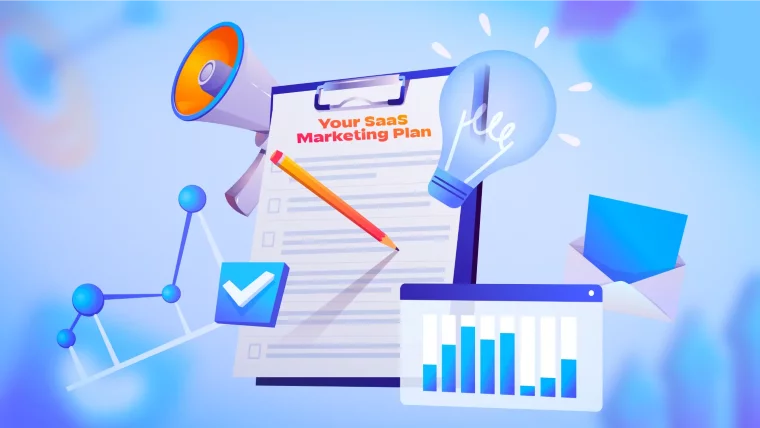
Creating an effective SaaS marketing plan involves several key steps:
Step 1: Create Your Buyer Personas
The First step is to develop a detailed ideal customer profile, including their demographics, pain points, and buying behaviors. This will help you tailor your marketing messages and tactics to resonate with your target audience.
Step 2: Do Competitor Research
Analyze your competitors’ marketing strategies, identifying their strengths, weaknesses, and opportunities for differentiation. Use these insights to refine your own marketing approach.
Step 3: Define Your Marketing Goals and OKRs
Set specific, measurable, and clear goals that align with your overall business objectives. Use the OKR (Objectives and Key Results) framework to ensure your goals are actionable and trackable.
Step 4: Choose Distribution Channels
Select the marketing channels that are most effective for reaching your target audience, such as content marketing, email marketing, social media marketing, and paid advertising on platforms like google search and meta.
Step 5: Choose Your Marketing Budget
Determine how much you can allocate to your marketing efforts, considering factors such as your revenue, growth stage, and industry benchmarks.
Dedicate a budget resource for all your digital marketing activities such as google ads, seo strategy, content marketing strategy, email campaigns, inbound marketing campaigns, social media platforms etc.
Step 6: Choose the Best Marketing Tactics
Based on your goals, target audience, and budget, select the specific marketing tactics that will drive the best results. This may include tactics such as SEO, content creation, customer service, sharing case studies, lead magnets for lead generation, webinars, and more.
Step 7: Track Progress and Analyze Your Results
Regularly monitor your SaaS marketing metrics and KPIs to assess the performance of your marketing plan. Use this data to identify areas for improvement and optimize your tactics accordingly. Measure your SEO success and check your SEO rankings to track progress.
Step 8: Do A/B Testing
Continuously test and refine your marketing messages, landing pages, and other elements to improve conversion rates and overall performance.
What Metrics Should SaaS Product Marketing Managers Focus on in Their Marketing Plan?
Product marketing managers should track a range of metrics to assess the effectiveness of their SaaS marketing plan, including:
- Acquisition metrics: Unique visitors, leads, customer acquisition cost (CAC)
- Engagement metrics: Activations, free trial conversions, feature adoption
- Revenue metrics: Monthly recurring revenue (MRR), customer lifetime value (CLV), CLV:CAC ratio
- Retention metrics: Churn rate, customer satisfaction, net promoter score (NPS)
10 Important Metrics You Need to Track For Your SaaS Marketing Plan

Here are 10 key metrics to include in your SaaS marketing plan:
- Unique Visitors: Track the number of unique individuals visiting your website or landing pages to gauge the reach and effectiveness of your marketing efforts.
- Leads: Monitor the number of potential customers who have shown interest in your product by providing their contact information or engaging with your content.
- Customer Acquisition Cost: Calculate the total cost of acquiring a new users/customers, including all marketing and sales expenses, to assess the efficiency of your marketing spend.
- CLV & CAC Ratio: Compare the lifetime value of a customer (CLV) to the cost of acquiring them (CAC) to ensure your marketing investments are generating positive returns.
- Conversions: Track the percentage of visitors or leads who take a desired action, such as signing up for a free trial or making a purchase.
- Signup to Paid Conversion: Monitor the percentage of free trial or freemium users who convert to paying customers, as this is a key driver of revenue growth.
- Customer Churn: Measure the percentage of customers who cancel their subscription or fail to renew, as high churn rates can negatively impact growth.
- Monthly Recurring Revenue (or MRR): Track the total amount of predictable revenue your business generates each month from subscriptions.
- Cost-to-Service or (CTS): Calculate the ongoing costs associated with serving and supporting your customers, as this impacts your overall profitability.
- Activations: Monitor the number of users who complete key onboarding steps or reach critical milestones in their product usage.
Best SaaS Marketing Tools to Monitor Metrics

To effectively track and analyze your SaaS marketing metrics, consider using tools such as:
- Google Analytics: Use Google Analytics to track website’s paid and organic traffic, user behavior, and conversion rates across your marketing channels.
- Crazy Egg: Crazy Egg provides heatmaps and user session recordings to help you optimize your website and landing page designs for better engagement and conversions.
- HubSpot: HubSpot offers a comprehensive suite of marketing, sales, and service tools to help you manage and optimize your entire customer lifecycle.
SaaS Marketing Plan Best Practices
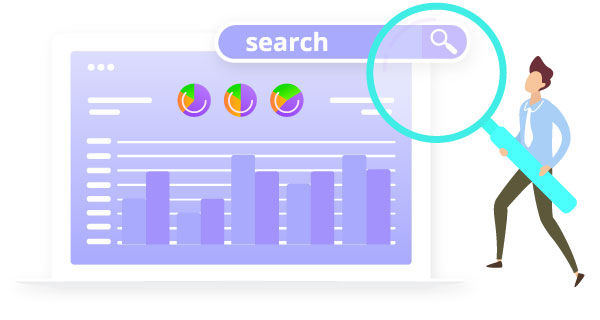
To maximize the impact of your SaaS marketing plan, consider these best practices:
- Ditching Discounts: Instead of relying on discounts to attract customers, focus on communicating the unique value and benefits of your product.
- Reading Reviews: Regularly monitor customer reviews and feedback to identify areas for improvement in your product and marketing approach.
- Offering Payment Options: Provide flexible payment options, such as monthly and annual subscriptions, to cater to different customer preferences and budgets.
- Talking Truth: Be transparent and honest in your marketing communications, building trust with your target audience.
- Increasing Subscription Costs: As you add new features and value to your product, consider gradually increasing your subscription prices to reflect the increased value.
SaaS Marketing Plan Template

To help you get started with creating your own SaaS marketing plan, here’s a simple template you can follow:
- Executive Summary
- Target Market & Buyer Personas
- Competitive Analysis
- Marketing Goals & Objectives
- Marketing Strategies & Tactics
- Marketing Channels
- Budget & Resources
- Timeline & Milestones
- Metrics & KPIs
- Optimization & Testing Plan
How Can Data Analytics Be Utilized to Optimize a SaaS Marketing Plan?
Data analytics can play an important role in optimizing your SaaS marketing plan by:
- Identifying the most effective marketing channels and tactics
- Segmenting your target audience for more personalized messaging
- Predicting customer churn and identifying at-risk accounts
- Optimizing pricing and packaging based on customer behavior and preferences
- Improving the user experience based on product usage data
FAQ’s:
How Do I Determine the Right Marketing Budget For My SaaS?
Your marketing budget should be based on factors such as your revenue, growth stage, and industry benchmarks. As a general rule, SaaS companies should allocate 10-40% of their revenue to marketing.
Can SaaS Companies Benefit From Influencer Marketing?
Yes, influencer marketing can be effective for SaaS companies, particularly in reaching niche audiences and building brand credibility. Focus on partnering with influencers who have expertise and authority in your industry.
What Are the Most Effective Channels For SaaS Marketing?
The most effective channels for SaaS marketing include SaaS content marketing, email marketing campaigns, social media marketing, paid advertising, and SEO. The right mix of channels will depend on your target audience and business goals.
How Often Should I Review and Adjust My SaaS Marketing Plan?
It’s recommended to review and adjust your SaaS marketing plan on a quarterly basis, or more frequently if you’re experiencing significant changes in your market or business.
How Long Does it Typically Take to See Results From SaaS Marketing Efforts?
The timeline for seeing results from SaaS marketing efforts can vary depending on factors such as your industry, target audience, and the tactics you employ. In general, it can take 6-12 months to start seeing significant results from content marketing and SaaS SEO efforts, while paid advertising can generate results more quickly.
How Do You Measure the Success of a SaaS Marketing Campaign?
The success of a SaaS marketing campaign can be measured using a variety of metrics, such as:
- Increase in website traffic and leads
- Improvement in conversion rates (e.g. free trial signups, paid conversions)
- Reduction in customer acquisition costs
- Increase in monthly recurring revenue and customer lifetime value
- Improvement in customer retention and reduction in churn rate
Conclusion
Creating a good SaaS marketing plan is key for steady growth and customer success today in the SaaS industry. This is especially true in a competitive environment.
Just following the steps and good practices in this guide will help you to be ready to create a complete plan. This plan will match your business goals and your target audience.
A good SaaS marketing plan needs to keep improving over time. This means using data and listening to what customers say. If you stay flexible and ready to change, you can make your marketing efforts better. This will help your SaaS business succeed in the long run.
At VH Info, we want to give real tips and plans to help SaaS businesses succeed. If you need more expert advice on SaaS link building and marketing, please look at our other resources and services.

